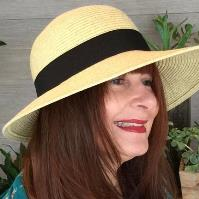Computer Vision and Robotics for Cultural Heritage: Theory and Applications
A special issue of Journal of Imaging (ISSN 2313-433X). This special issue belongs to the section "Computer Vision and Pattern Recognition".
Deadline for manuscript submissions: closed (28 February 2022) | Viewed by 24152
Special Issue Editors
Interests: direct visual alignment; 3D visual tracking; visual servoing; digital heritage
Interests: range imaging; computer graphics; digital preservation; virtual museums
Interests: computer vision; computer based rehabilitation
Special Issues, Collections and Topics in MDPI journals
Special Issue Information
Dear Colleagues,
Computer vision and robotics are more and more involved in cultural heritage. From data acquisition to heritage interpretation, the various tasks of culture heritage must face specificities of tangible and intangible heritages. For example, some ancient materials evolved with time and are possibly very unique, and therefore different from today’s buildings or paintings. Another example is the rarity of artefacts or cultural events such as some dance or ceremony practiced at a unique place on Earth by a very few people, but nevertheless is part of humanity’s heritage. The reality extends much wider than these few examples and inspires computer vision and robotics researchers to design new sensors, new robots, new methods, and new interfaces in collaboration with historians, physicians, curators, and teachers to allow archiving, analyzing, and interpreting cultural heritage in an unprecedented way. The combination of so many various skills is now well known as digital heritage.
This Special Issue welcomes the presentation of new works within the multidisciplinary field of digital heritage, simultaneously contributing to computer or robot vision and digital heritage. Theoretical works as well as applications of tangible and intangible digital heritage are expected about archiving, including in combination with conventional techniques, standardization, monitoring, interpretation, education, and restoration. Examples of expected works are not limited to the following:
- Acquisition: visual and 3D modalities for archiving cultural assets, robotic vectors to access and explore heritage sites, etc.
- Analysis: layers separation of documents from imaging, vision-based recognition of historical artistic styles, new methods to transform raw visual or 3D data to more abstract representations of heritage assets (e.g., building, painting), etc.
- Interpretation: augmented/mixed/projective reality/mapping of heritage sites, robot guide in museums or archaeological sites, assistive virtual tours of heritage sites, etc.
Dr. Guillaume Caron
Prof. Dr. Olga Regina Pereira Bellon
Prof. Dr. Ilan Shimshoni
Guest Editors
Manuscript Submission Information
Manuscripts should be submitted online at www.mdpi.com by registering and logging in to this website. Once you are registered, click here to go to the submission form. Manuscripts can be submitted until the deadline. All submissions that pass pre-check are peer-reviewed. Accepted papers will be published continuously in the journal (as soon as accepted) and will be listed together on the special issue website. Research articles, review articles as well as short communications are invited. For planned papers, a title and short abstract (about 100 words) can be sent to the Editorial Office for announcement on this website.
Submitted manuscripts should not have been published previously, nor be under consideration for publication elsewhere (except conference proceedings papers). All manuscripts are thoroughly refereed through a single-blind peer-review process. A guide for authors and other relevant information for submission of manuscripts is available on the Instructions for Authors page. Journal of Imaging is an international peer-reviewed open access monthly journal published by MDPI.
Please visit the Instructions for Authors page before submitting a manuscript. The Article Processing Charge (APC) for publication in this open access journal is 1800 CHF (Swiss Francs). Submitted papers should be well formatted and use good English. Authors may use MDPI's English editing service prior to publication or during author revisions.
Keywords
- imaging for digital heritage
- robotics for digital heritage
- image processing for digital heritage
- interactive virtual tour of heritage sites
- interactive robot for heritage tours
- digital heritage use cases featuring computer/robot vision
- digital heritage projects featuring computer/robot vision








